About Pilot entrance exam after 12th
If you are planning to follow the career pathway of a pilot, you can follow a pilot training option after 12th or qualify NDA examination to get the training of an Air Force pilot. The key obligation to become a pilot after 12th is that you necessity have completed 10+2 in Science but there are numerous pilot training academies that also proposal admission to commerce scholars. The least age limit for scholars ambitious to become a pilot in India is 17 years and you will also have to deliver fitness and medical certificate.

| Pilot entrance exam after 12th | NDA Examination |
| Eligibility | 10+2 in Science (MPC)/Commerce |
| License | Commercial Pilot License (CPL) |
| Salary | 2 Lakhs to 5 Lakhs |
| Fees of Pilot Training Options | 15 Lakhs to 20 Lakhs |
| Types of Pilots | Airline Pilot, Commercial Pilot, Fighter Pilot, Charter Pilot |
| Top Pilot Schools | Indira Gandhi Rashtriya Uran Academy, Bombay Flying Club, Rajiv Gandhi Academy of Aviation Technology, Madhya Pradesh Flying Club, National Flying Training Institute |
How to Become a Pilot after 12th?- Pilot entrance exam after 12th
To enrol in any of the Aviation options, you will be obligatory to fulfill eligibility criteria as set by the institute or academy. Enlisted are the suitability requirements to become a pilot after 12th in India:
- Your age should not be less than 17 years to initiate training
- You must have scored 50% in 10+2 which may differ as per the Institute requirement
- You must have deliberate MPC subjects [Maths, Physics, and Chemistry] along with English at the intermediate level
- If you are a non-science scholar, you may follow the required subjects through the National Institute of Open Schooling or as a private candidate from the particular state board
- You will need a medical certificate issued by the obligatory authorities.
How to Become a Pilot in India?
Before provided that you with a complete guide on how to become a pilot after the 12th, let’s first give you an impression of the two routes you can take to develop a pilot in India which are as follows:
Civil Aviation
(Compelling the Non-Military Route through Commercial Pilot Training Programmes)
To take this way to become a pilot, you need to gain a commercial pilot certification from a specialized authority which is the Directorate of General of Civil Aviation in India. As a commercial pilot, you will be flying a exact aircraft for an airline and there are numerous training academies around the world that offer varied programmes in Commercial Pilot Training and the essential suitability requirement for same is that the scholar must have completed 10+2 with science stream from a known board of education Here is a list of top flying schools across the globe that you consider:
- CAE Oxford Aviation Academy
- Flight Safety Academy
- Pan AM International Flying Academy
- Singapore Flying College
- CTC Wings, Europe
Indian Defence Forces (Air Force)
If you are willing to clear the competitive entry exams for Indian Defence Forces, then enchanting the Airforce route to become a pilot is the appropriate one for you. The shortlisted applicants from the rigorous admission procedure are trained for 3 years at the National Defence Academy, Khadakwasla. Here is the admittance procedure to get into the Indian Defence Forces:
Where to Pursue Pilot Courses after 12th?
These are some of the globally known colleges, universities, and academies catering to provide foundational and technical abilities essential to building your job as a professional pilot:
- Purdue University
- University of North Dakota
- Ohio State University
- San Jose State University
- Embry Riddle Aeronautical University
- Academy College
- Hallmark University
- Spartan College of Aeronautics and Technology
- Rio Salado College
- Aeroism Flight Academy
- Flight Safety Academy
- Singapore Flying College
- CAE Oxford Aviation Academy
Skills Required
- Sturdy technical skills
- Critical thinking and decision-making
- Situational and environmental awareness
- Good communication abilities
- The highly absorbed and disciplined personality
- Striving continually for excellence
- High-level flexibility
- Mental stability and physical fitness
- Good sense of teamwork
- Inherent or learned leadership quality
How to Become a Pilot after 12th?
Stage 1: Pursue a Bachelor’s Degree
An airline pilot needs a bachelor’s degree in some subject, whereas a commercial pilot typically needs a high school diploma or equivalent. Certain of the flight schools are part of 2-4 year colleges/universities offering the wanted aviation or aeronautics degree, accepted by the Federal Aviation Administration (FAA).
Pilot Courses after 12th
Choosing for a Commercial Pilot Training [CPL] program after 10+2 is yet one more way to become a pilot after 12th. For this, you will be compulsory to clear an entry exam, interview, and a medical test as set by the institution. The fees of Pilot Training courses after 12th range from INR 15 Lakhs to 20 Lakhs and can too vary if you plan to education abroad. Here are top institutions for Pilot Training courses after 12th:
- Indira Gandhi Rashtriya Uran Academy
- Bombay Flying Club
- Rajiv Gandhi Academy of Aviation Technology
- Madhya Pradesh Flying Club
- National Flying Training Institute
Through NDA Exam
In India, the coveted NDA exam is a golden chance for those who want to become a pilot after 12th. Upon finishing the 3 years long option, you also have to join flying training. Thereafter, you will work as a permanent commission officer.
Other Essential Particulars on How to Become a Pilot After 12th:
- It is essential to clear the class 2 medical of DGCA
- Join an aviation institution
- Fly at least 200 hours
- Clear the examinations
- Get the CPL certificate
Stage 2: Get the Flying Experience
If you are ambitious to become a pilot then, you are obligatory to achieve a definite number of flight training hours to earn a license. The training hours depend upon the wanted type of pilot platform. For example, for a commercial pilot’s license, 250 hours of flying is desirable and 1,500 hours of flight time for an airline pilot. A formal training prepares you with basic education, though, to gain in-depth understanding and experience, you can hire a personal instructor or even join the military for exposure.
Stage 3: Earn a Pilot’s License
The first step is to complete the compulsory number of hours of flight experience, followed by a written valuation exhibiting your flying capabilities and clearing the physical test. The key is to be confident and prepared. List of main pilot licensing issued by the Civil Aviation Authority (CAA) in each country are as follows:
- Private Pilot License (PPL)
- Commercial Pilot License (CPL)
- Airline Transport Pilot License (ATP)
- Multi-crew Pilot License (MPL)
- Commercial Multi-Engine Land (CMEL)
- Certified Flight Instructor (CFL)
In the US, documentation is regulated by the FAA, while Transport Canada issues licensing in Canada. In most European nations, comprising the UK, Switzerland, Greece, France and many more, licensing is equipped by the National Aviation Authority.
Additional, based on the type of pilot you want to become, the age wants for a license will differ.
- Student Pilot License – 16 years
- Private Pilot License – 17 years
- Commercial Pilot License – 18 years
Stage 4: Complete Additional Training and Tests
A lot of airline corporations need pilots to take aptitude and psychological tests as a precondition for employment. Once placed, pilots undergo additional weeks of training and flight involvement to get a hang on an adventure as co-pilots. Securing a preceding experience with a regional airline business is always beneficial in the long run if you later plan to join a main airline.
Stage 5: Advance as an Airline Pilot
Leaping from pilots to the rank of a captain completely contingent on seniority and experience. You will have to clear additional FAA written and practical examinations in order to obtain added flight ratings. You can endure learning and exploring the alterations in the industry. Enriching sessions and webcasts are extended by the Aircraft Owners and Pilots Association (AOPA), International Federation of Airline Pilots Associations (IFALPA) for mastering and development.
Thats it in Pilot entrance exam after 12th. Also check career option after BSc in PCM.
To know more at Education in India.








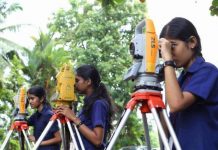




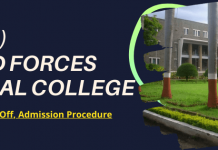







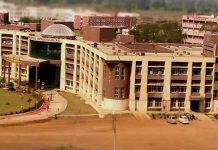

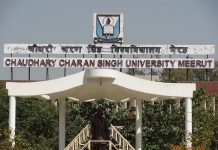


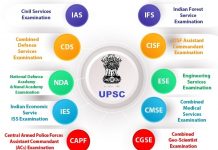










[…] Careers in Hotel ManagementEngineering Highest PlacementAfter GNM one year coursesTIME GAP BETWEEN JEE MAINS AND ADVANCEDPilot entrance exam after 12th […]